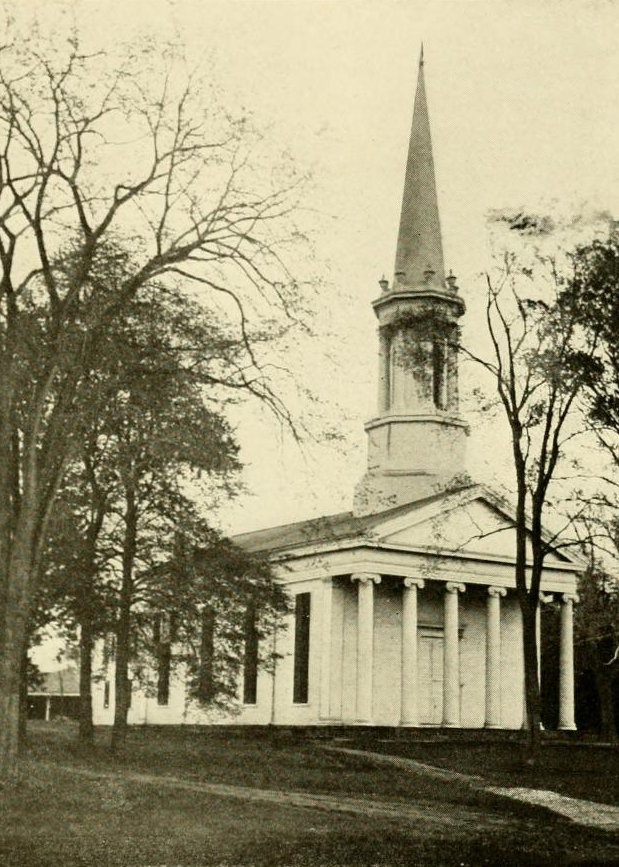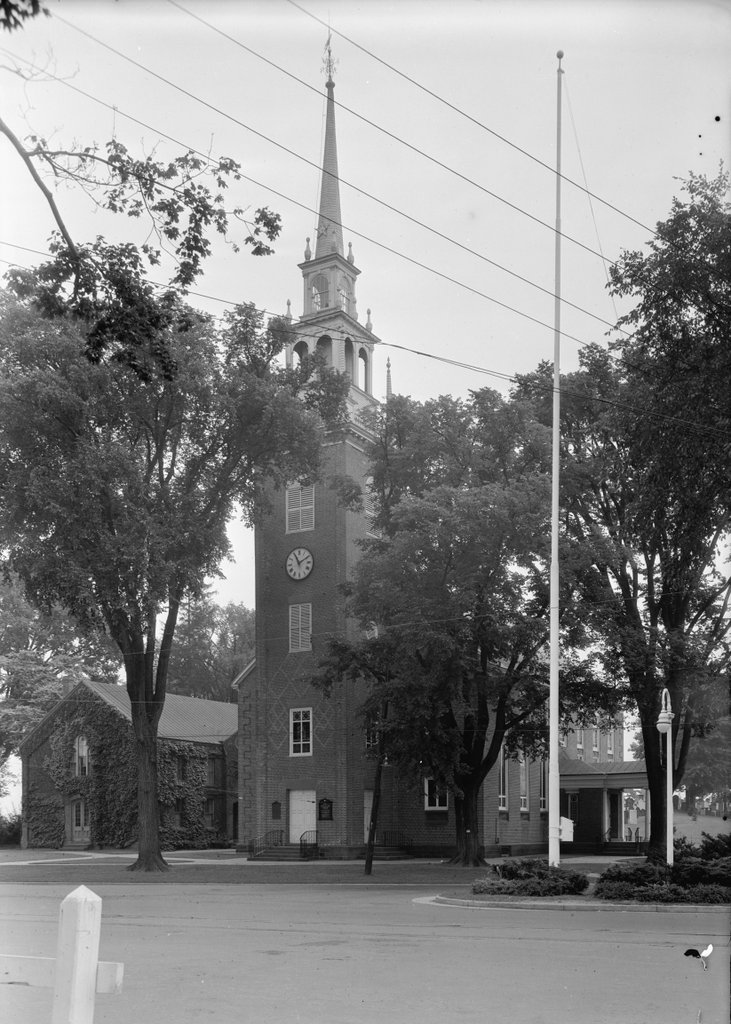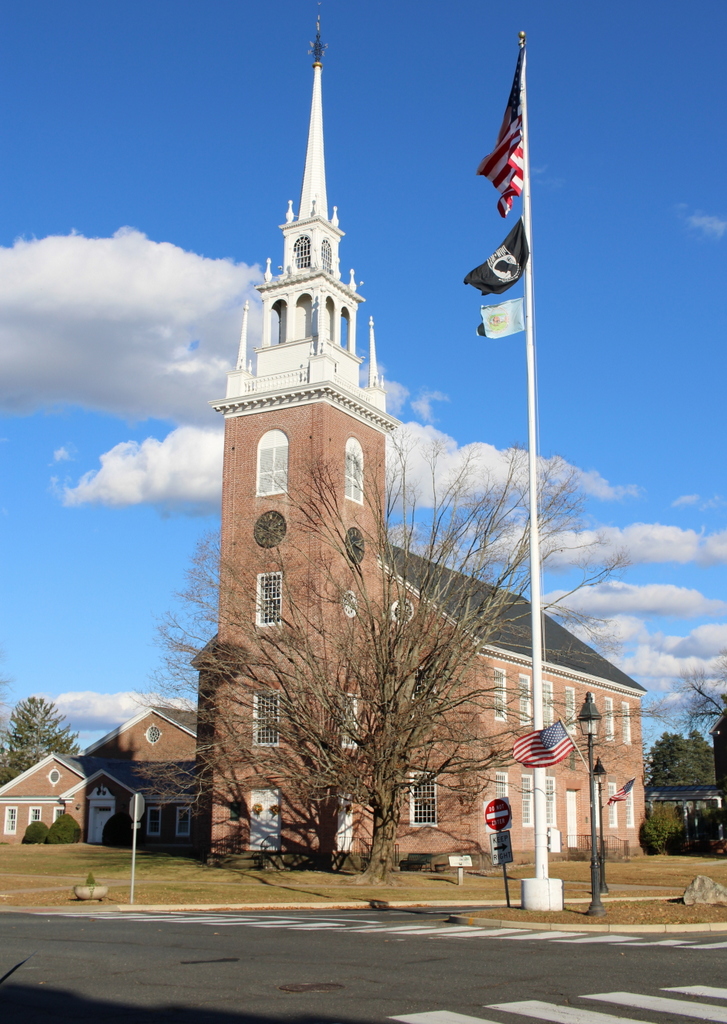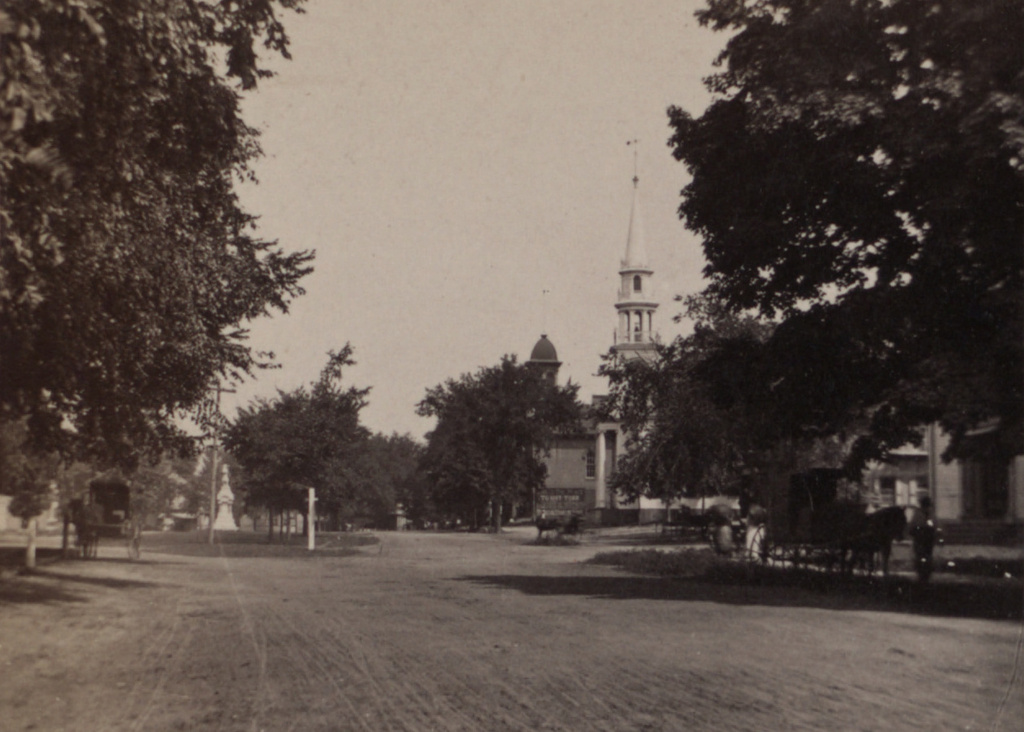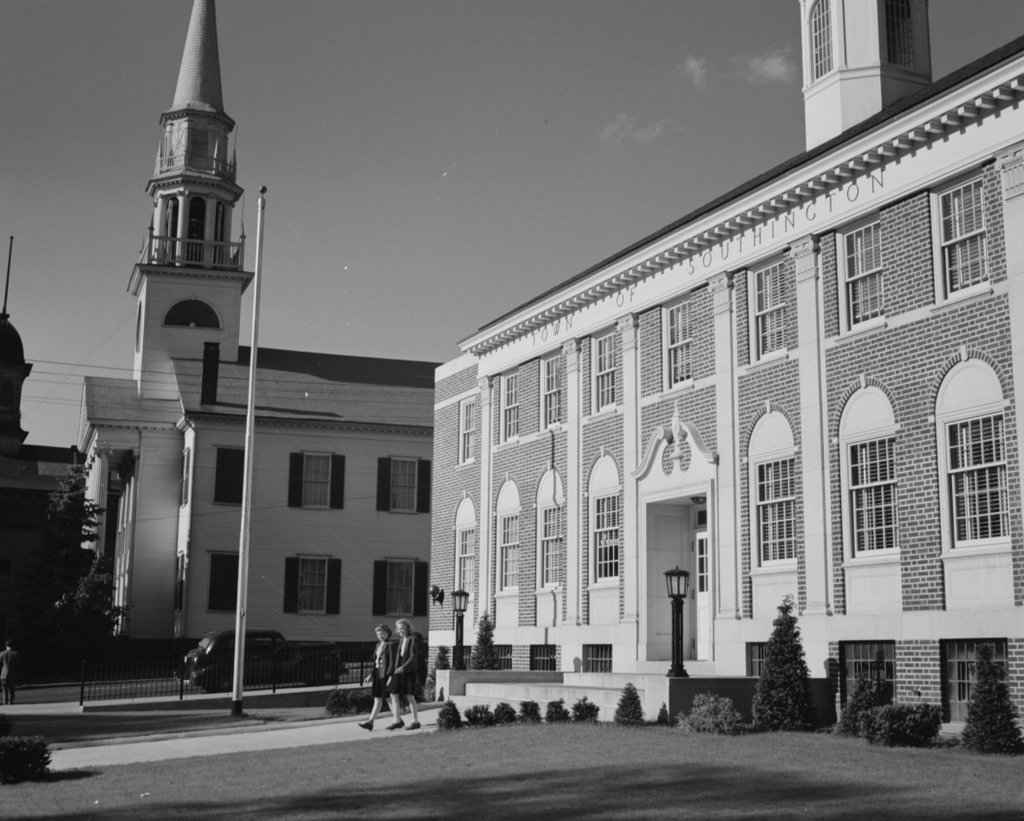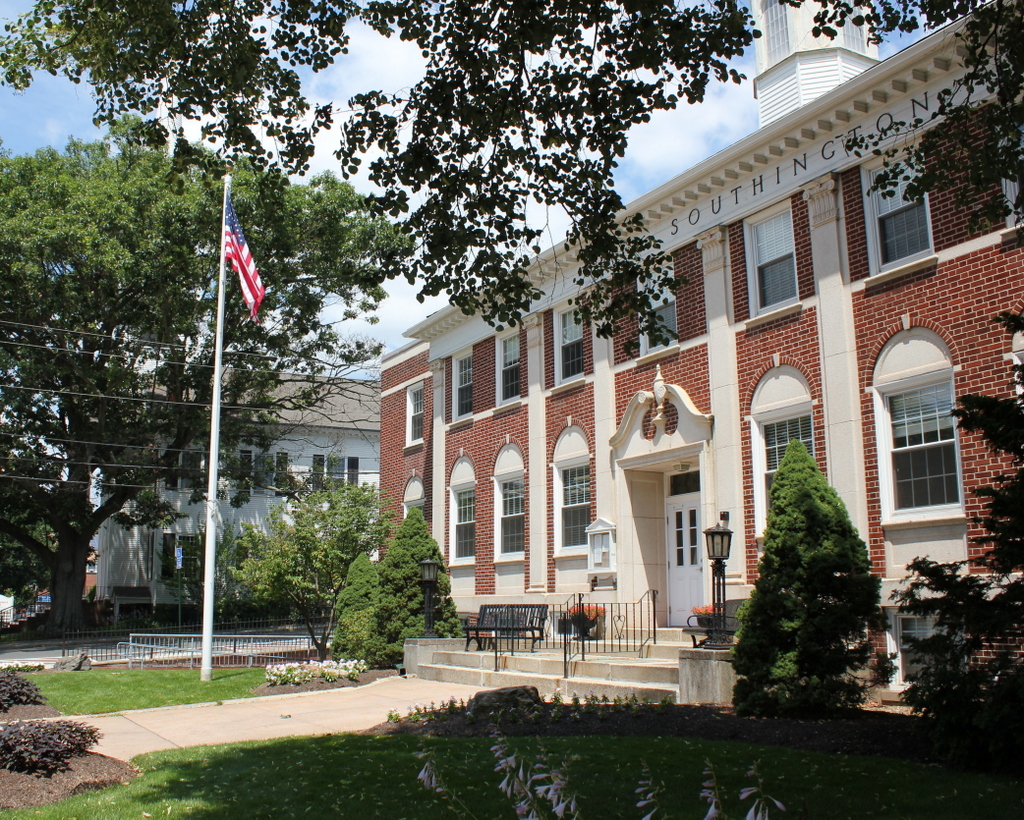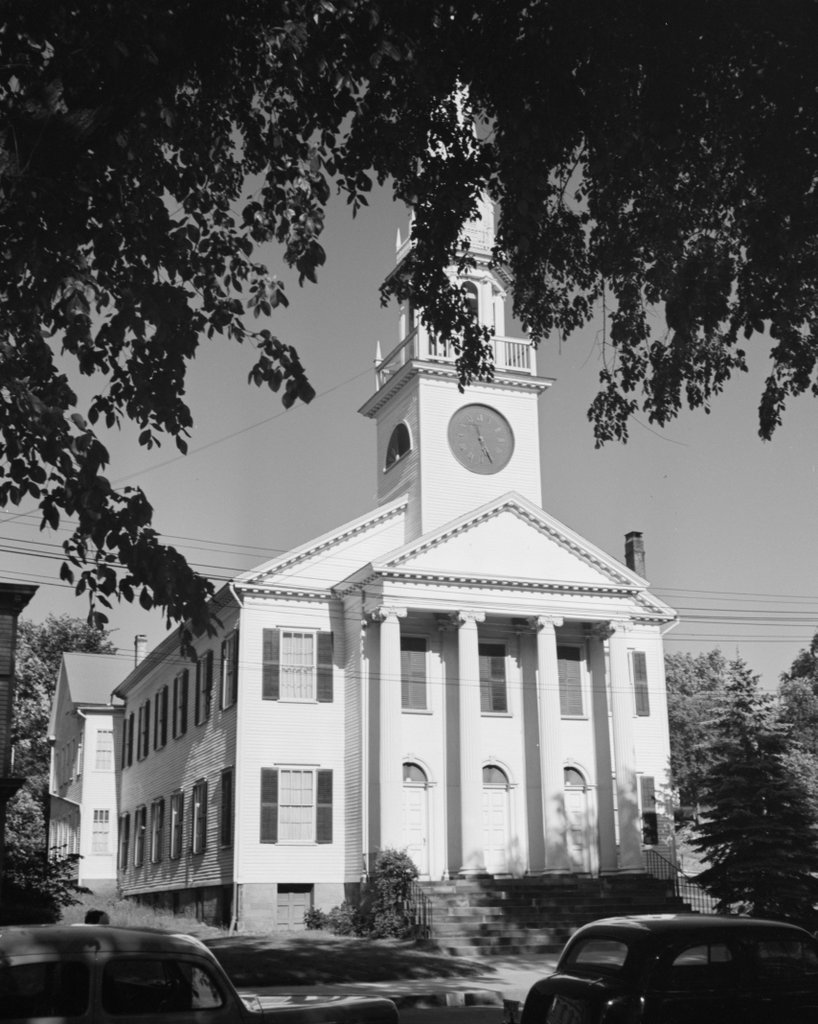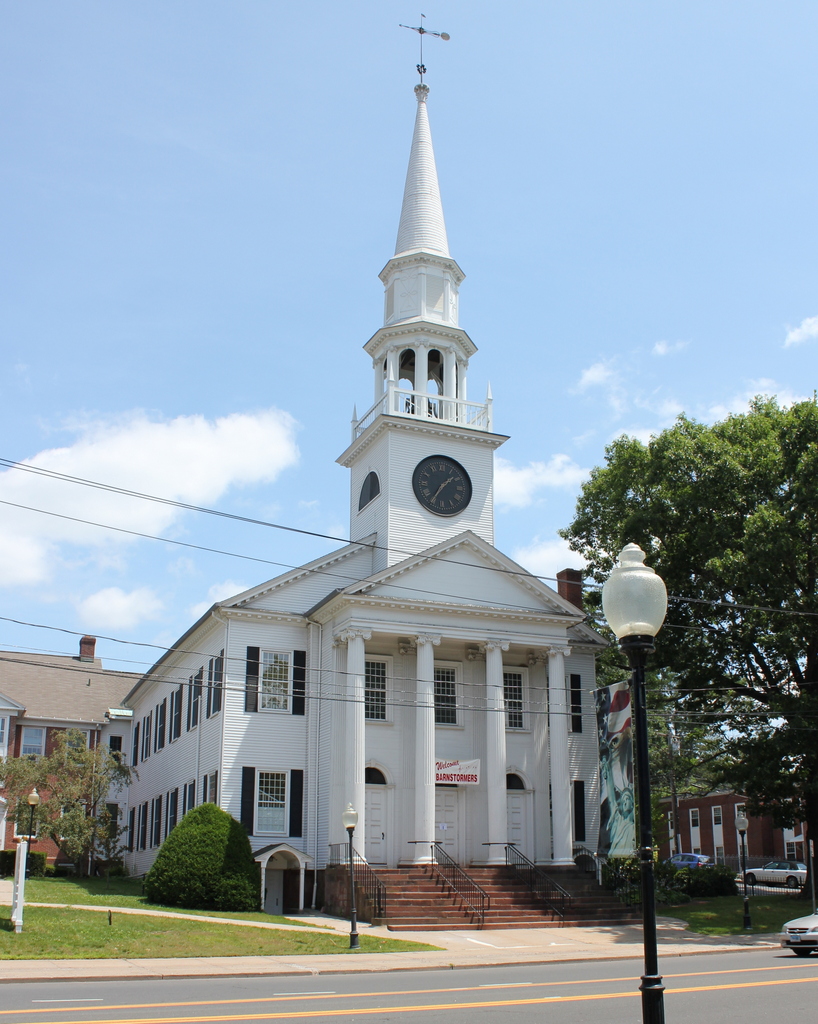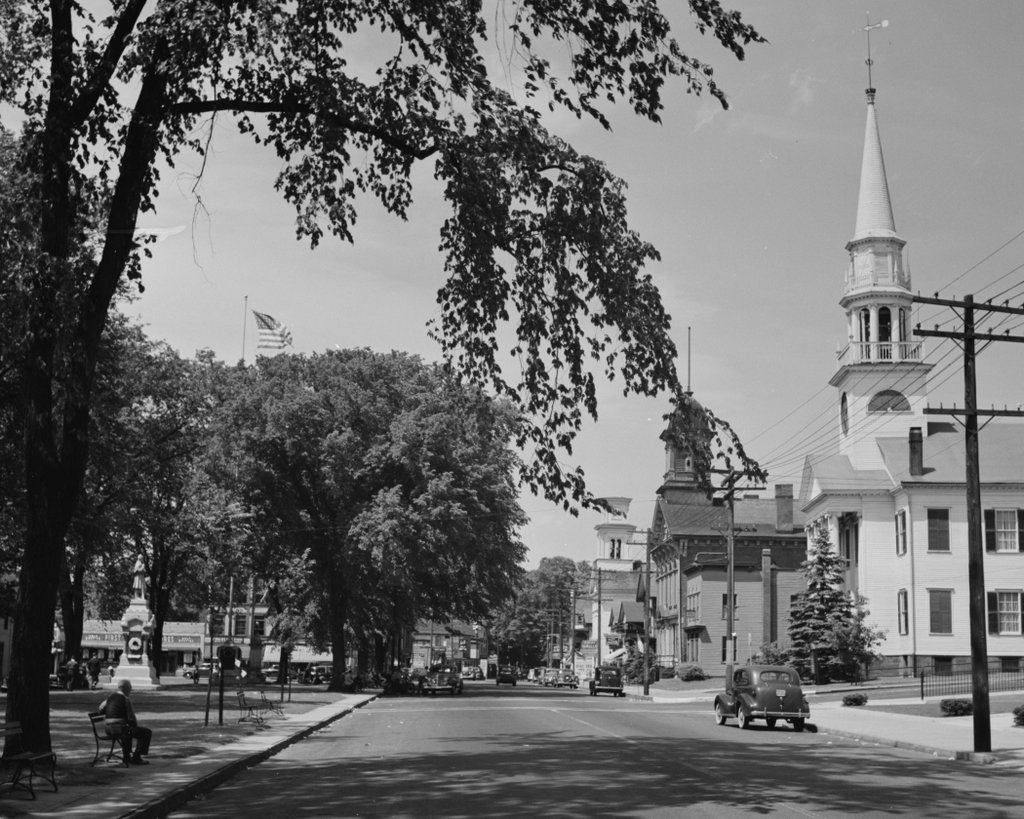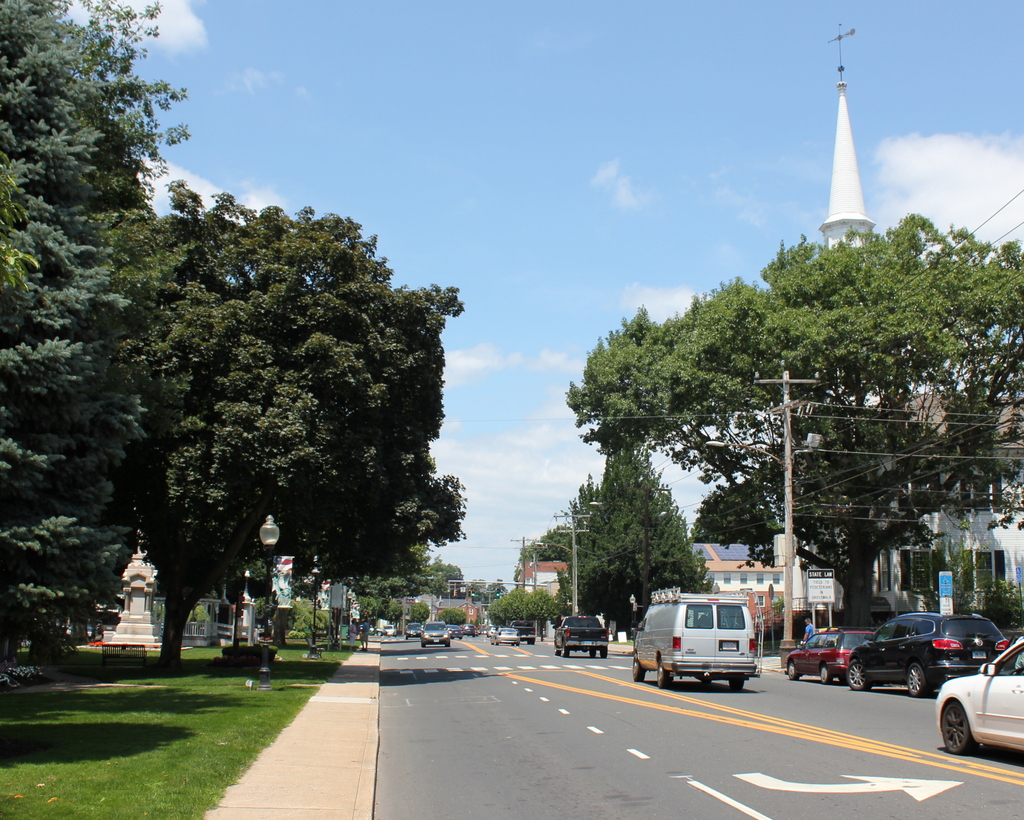The Enfield Congregational Church on Route 5 in Enfield, around 1911. Image from Some Old Time Meeting Houses of the Connecticut Valley (1911).
The church in 2015:

In terms of churches, Enfield is probably best known as the place where Jonathan Edwards preached his famous sermon, “Sinners in the Hands of an Angry God.” The actual church that he preached in no longer exists, but it stood about a third of a mile south of here along present-day Route 5. In 1775, a new church was built on this spot, and it was later moved across the street, where it still stands today as the Enfield Historical Society. The current church, seen here, was built in 1849, in the Greek Revival style that was popular in the first half of the 19th century. Its design was outdated almost as soon as it was finished, though. Not long after its completion, Greek Revival architecture went out of style, and most new church buildings in the second half of the century were either Gothic Revival or Romanesque. However, over the years it has been the wood, white-steepled churches of the early 19th century that have become a symbol of small-town New England, and Enfield’s example survives today, essentially unchanged on the exterior from the photo over a century earlier.

